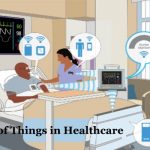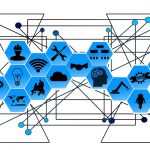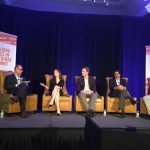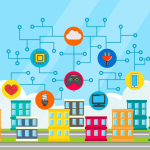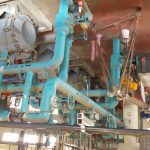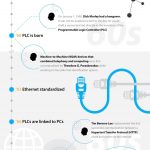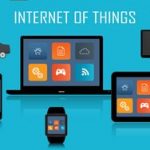a glance inside Google and Carnegie-Mellon’s IoT Campus
The “web of things” is headed to school. . . .
July 24, 2015
For the “internet of things” to thrive, all it needs is for all devices to get along—which is at the moment wishful thinking. remaining week, on the other hand, Google introduced a partnership with Carnegie-Mellon university, which is major a collaboration of school from several other educational establishments on a mission to jumpstart the internet of issues revolution. Their plan: construct a universal platform that lets any device speak to every other instrument. And fittingly, that master-key resolution will be open supply.
the issue is that IoT software and devices are mostly proprietary, constructed by means of every company and working smartly inside their own sandboxes, however they do not communicate neatly together. The joint challenge between CMU, Cornell, Stanford, Illinois at Urbana-Champaign, and Google desires to wipe away the private-business middlemen that keep sensors in separate sandboxes by growing a new, open platform: GIoTTO.
The CMU staff chief, Anind Dey, and his fellow professors are building GIoTTO’s middleware, which is a gorgeous technical job—stitching the entire proper tool together so any sensor you choose up off the shelf (measuring temperature, force, light, and so on.) will work with your device. Dey needs their platform to receive data by the use of any signal sort—whether BLE, passive infrared, or otherwise—and exhibit those who data in ways they’ll have in mind.
to do this, Dey and his team will make various proof-of-idea examples to check their tech, constructing sensor networks on campus to make the campus a “dwelling laboratory” for folk to discover IoT and give you how to apply the sector of IoT to their box of study. The growth across campus (and potentially out into the city of Pittsburgh) has three goals: uncover different use instances as diverse people outdoor Dey’s labs play with the IoT sensors, power iterative construction of GIoTTO’s open infrastructure by way of adapting it to those completely different use cases, and allow more individuals to experience the web of things and learn about how they use it.
Dey’s team will even be teaching undergraduate and graduate courses on the way forward for IoT (and perhaps plucking option concepts from artful students). The courses are not simply in pc science: Dey’s group is a group of seven laptop science and engineering professors (and their postdocs and graduate students, bringing the crew dimension as much as about 50ish people) specializing in hardware, computing device finding out, and human-laptop interaction. but as a result of CMU is a democratic campus—very few things are pushed on college from on high—Dey’s group can not simply unfold sensors willy-nilly on other departments’ turf. The plan: Publicly display some sample end-person applications that show what you can do with sensor-accrued data, and stay up for phrase of mouth to spread. sooner or later, Dey hopes, different departments will come asking Dey’s group for a sensor cluster of their very own.
“There might be a ton of various objects going into our infrastructure—so we would like with the intention to query them. we want so as to ask any sensor and pull or subscribe and tell me when one thing interesting is happening,” says Dey. “Our idea is that I as an end user don’t remember what readings of barometric milligrams of mercury mean. What i need so that you could do is take a barometer and put it on my wall, open and shut my window 10 times, and now not get a response on the subject of pressure—as an alternative, i’ve a sensor that tells me whether my window is open or closed.”
The sensors themselves measure common environmental knowledge—temperature, proximity, barometric drive, seismic or vibration task, mild—however Dey’s staff will be capable of draw activity conclusions from multiple readings. for example, the proximity sensors can observe how many individuals are in a neighborhood or in line for an adventure, whereas a temperature sensor may tell the group if somebody switched on a brand new pot of coffee. the type of sensor isn’t terribly essential to the experiment, says Dey: His team is in reality simply excited to listen to what other departments want to observe, and Dey’s workforce will finagle a way to monitor it the use of available sensors. With this type of liberal and technologically conscious population, Dey is certain there will probably be uneasiness about information monitoring. except their undertaking’s knowledge collection becomes a norm, Dey’s workforce will put up signage to indicate what data the sensors are accumulating and where it’s being accumulated.
In a yr, Dey hopes to move on to section two in his diabolical plan: spread these sensors throughout the city of Pittsburgh to continue collecting sensor information—but in addition to satisfy his interior transportation wonk. Dey would like to put a sensor community all over Pittsburgh’s bridges, which can be a very powerful infrastructure for a metropolis unfold over three rivers, and use sensors to dig into the town’s bus network. Get sufficient knowledge, and Dey could advocate the native transit authority to alter the timing of this bus line or move that line three blocks over and even do away with a line and exchange it in different places, says Dey.
half of a dozen of Dey’s professor peers had already been independently engaged on IoT functions when Google came calling for proposals for what become the GIoTTO undertaking. Dey and his peers were picked to handle the middleware of the Google-helmed undertaking to build the new GIoTTO platform, but other academic teams are managing totally different items of the GIoTTO undertaking pie: any other CMU crew is coping with privateness, a workforce from the college of Illinois at Urbana-Champaign is coping with safety and networking protocols, and the staff at Cornell college is focusing on holding all that IoT sensor data stable and stopping intrusive people from siphoning all that IoT information.
Why the entire focal point on safety and privacy? at the moment, a hacker prying into someone’s online world will find information from online banking and different debts, however IoT gadgets present plenty of behavioral knowledge about where you go and what you do. And for the reason that GIoTTO platform is designed to work with off-the-shelf sensors, hackers have had plenty of time to find ways within that tech.
“it’s an exceptionally exhausting problem to solve. i will be able to’t call to mind a single instrument on our network that hasn’t been hacked in the past, whether or not it is an OnStar car or an insulin pump,” says Dey.
and of course, having Google onboard means Dey’s staff might get to play with Google’s toys. Dey’s team is working to get get entry to to the NEST family of gadgets and hopes to get get admission to to turn into builders for Google Now. The scope of the challenge is large—to herald the age of IoT adoption with the aid of constructing a platform that works with any sensor—but Google and the lecturers are committed to keeping the whole thing open-sourced. They hope to have the primary version of GIoTTO out by way of mid-fall, when the quite a lot of academic teams meet in late October, says Dey.
“We’re in reality looking to make it as open as possible. because the IoT ocean gets bigger, all boats upward push,” says Dey.
(105)



